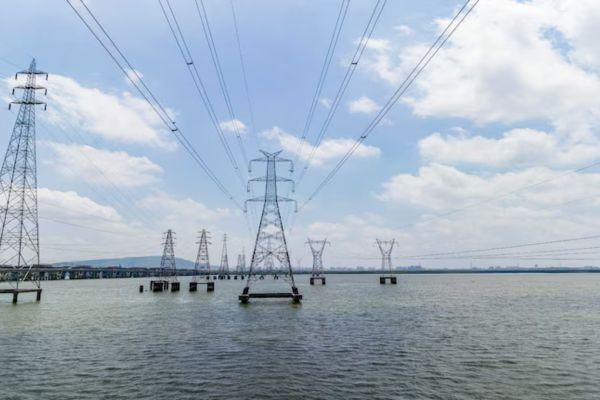In a recent communication to transmission utilities, the Central Electricity Authority (CEA) has recommended the usage of 48-fibre OPGW instead of 24-Fiber OPGW for upcoming projects. An Optical Ground Wire (OPGW), usually the topmost wire on transmission lines, serves the dual purposes of grounding and telecommunication. The recommendation comes on the back of increasing demand from telecom and internet service providers as the data needs of the country increase. This raises an important question: Were the earlier 24 Fiber OPGW cables ever good enough? Perhaps they met the needs at that point in time, but with rising demand, infrastructure requirements have increased. This brings us to the broader question: Is India’s current transmission planning adequate?
We used to see under planning in the roads sector almost a decade ago, wherein every 2-5 years, roads were widened or flyovers built in response to increasing traffic. This would result in additional costs to the government and society. However, the government has stepped in with ambitious road projects and started heavily investing in infrastructure. For example, in Mumbai, the Atal Setu is an ambitious project that would not have been taken up if only short-term demand was considered. Similarly, the Mumbai metro project, which is just now seeing the light of day, highlights the importance of planning 20-30 years ahead.
Now, let’s look at the transmission infrastructure planning. The National Electricity Plan (NEP) highlights India’s transmission infrastructure needs till 2032. It envisages an increase in peak demand from the current 250 GW levels to 458 GW (including demand from green hydrogen and ammonia) by 2032. The Generation capacity during the same period is expected to increase from 432 GW currently to 1000 GW. The plan envisages adding 42% of the transmission line capacity built till 2022 in the 10 years from 2022-32. The CEA draws up short-term plans annually on a rolling basis for five years and prospective plans biennially for ten years.
Demand in India is expected to increase further with the addition of industrial loads and newer loads such as data centres. Electricity consumption by data centres is projected to be 6% of total consumption by 2030, driven by AI, localisation laws, and machine learning. India is going to be one of the fastest-growing major economies in the world for years to come. But India, the world’s 5th largest economy ranks 23rd in terms of per capita electricity consumption, which is one-fifth of China’s and one-tenth of the USA’s. With rising incomes, aspirations, and rapid industrialisation, per capita demand will increase further.
A recent report by CII titled “Energy Transition for Viksit Bharat 2047” envisages a peak demand of 700 GW by 2047. While the transmission networks planned for 2032 address current projections, evolving energy needs require a more long-term outlook. This could mean laying an additional network or uprating and upgrading parts of the existing transmission network. India’s network has evolved from 132 KV AC during independence to 765 KV AC and 800 KV DC today. There was a gradual increase in voltage levels as technology progressed and demand increased. However, Inter-State Transmission Systems (ISTS) built today are meant to last 25-35 years. Are they sufficient to fulfil the demand towards the end of this period?
Even developed economies like the US are grappling with transmission challenges, highlighting how critical long-term planning is. Should India consider extending its planning horizon to 2047 or beyond?
One argument against over-planning is the risk of additional capacity and suboptimal utilization. Japan’s sprawling metro network caters to urban centres like Tokyo but also to the cities of Kyoto and Osaka. Although, the network of Kyoto and Osaka are not fully utilized to optimal capacity as those of Tokyo, but capacity exists nonetheless to accommodate more traffic. This is useful during tourist season and peak hours. India’s metro projects in Tier-1 and Tier-2 cities are planned on this model, anticipating full utilisation over time.
The second aspect is that planning requires coordination among various agencies. The National Electricity Plan takes inputs from the Electric Power Survey (20th EPS), MNRE/ SECI, private participants, state utilities, etc. The NEP includes additional green hydrogen and ammonia capacity as per MNRE projections. Also, capex commitments from the public and private sectors are uncertain over longer periods.
Thirdly, the timeline for drastic cost reductions due to technology advancements remains uncertain. International Renewable Agency (IRENA) estimates that the levelized cost of hydrogen could drop to $2/kg by 2030 with improved electrolyser costs and efficiency. Government incentives and global commitments to green energy are spurring private sector participation, fostering innovation and reducing costs. However, varying forecasts on technology development, ambiguity on global clean energy commitments and the absence of a fixed adoption timeline create uncertainty. Rapid advancements might also lead to unanticipated demand surges.
Moreover, on the supply side, delays in carbon credit markets, PLI schemes, and solar module manufacturing could lower renewable adoption.
Everything is interlinked and the solution is not simple. Regulators must strike a balance between realistic developments, future projections and technological dynamics. While overcapacity could pose temporary issues, under-planning leads to bottlenecks and hinders growth. Questions like “How much overcapacity is fine?” and “Will demand and supply align in time?” must be weighed against questions like “When has India’s demand ever declined?” and “Are we underestimating demand?”
Conclusion:
India’s power sector is undergoing a transformation, driven by ever-increasing energy demand, technological advancements, and policy shifts towards renewable energy. The need for robust and reliable transmission infrastructure is paramount to ensure the efficient and secure delivery of electricity across the country.
While the current National Electricity Plan (NEP) outlines ambitious plans for transmission expansion, there is a growing recognition that a longer-term perspective is also necessary to address future energy needs. Infrastructure sector is considered as growth enabler for the economy, and it is a prerequisite for industrial development. “Induced Demand” created by widespread infrastructural development initiates wider cyclical economic activity and promotes innovation. And maybe that’s what makes the Policymakers job that difficult!

By Harshal Vyas, VP & Head – Corporate Strategy, Bajel Projects Limited


















